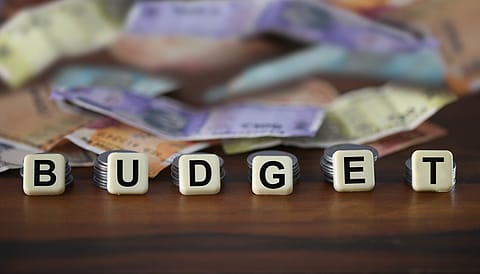Budget 2025: Energy and infra as key drivers for Viksit Bharat 2047
Energy and infrastructure remain foundational to India’s $5 trillion (~₹430 lakh crore) economy ambition

India’s vision of becoming a developed nation by 2047 requires a clear understanding of its current economic landscape along with an anticipatory overview of the challenges that might emerge along the way.
The National Statistical Office (NSO) estimates a 6.4% growth rate for 2024-25, the slowest since the pandemic – with concerns about whether it reflects a natural economic cycle or a result of the government’s reduced capital expenditure (10% of the budget allocation in FY 24-25, a third of the allocation in the prior three budget cycles). Training focus on capital expenditure is certainly essential, corroborated by the National Institute of Public Finance and Policy (NIPFP) which outlines how every rupee spent on infrastructure yields a GDP return of 2.5 to 3.5 rupees.
However, economic growth requires more than capital expenditure—policy reforms, private investments, and human capital development are equally vital. In addition, sustainable economic progress demands active participation from the private sector. The Union Budget FY 2025-26 can play a critical role in charting a course that balances sustainability with economic growth by encouraging private investments.
Energy and infrastructure remain foundational to India’s $5 trillion (~₹430 lakh crore) economy ambition. While progress has been made in achieving net-zero carbon emissions by 2070 to meet Nationally Determined Contributions, the efforts to strengthen the country’s renewable energy ecosystem must continue. Investments in energy storage and alternative sources like green hydrogen are essential to enhance efficiency and affordability in the energy ecosystem.
Electricity is expected to become the backbone of India’s energy system, necessitating robust transmission infrastructure to meet growing demand. The National Electricity Plan emphasizes the need to support renewable energy targets of 500 GW by 2030 and 600 GW by 2032, which will necessitate investments of close to $ 112 billion (~₹9 lakh crore) for transmission sector upgrades.
However, the national grid is marred by significant transmission and distribution losses (~18%), which is quite high in comparison to the global average (~8%). The losses can be primarily attributed to ageing infrastructure and technical inefficiencies. Thus, it is pertinent to modernize the national grid to accommodate rising demand, improve efficiency, and reduce losses. Special attention should also be given to the dwindling health of state-owned discoms to reduce and arrest the financial losses.
The investment in smart grid technologies, artificial intelligence (AI) solutions, and decentralized energy systems will help enhance energy efficiency while minimizing transmission and distribution losses. Furthermore, it will improve the power grid's resilience, stability, and flexibility, paving the way for democratizing energy usage for all.
Recommended Stories
Thus, the budget must emphasize streamlining approvals, incentives & appropriate tariff structures and encouraging private investment through public-private partnerships (PPPs) to modernize gid and expand transmission capacity.
Clean energy is a key driver of economic growth, contributing to income generation and employment. According to the International Energy Agency (IEA), clean energy accounted for 10% of global GDP growth in 2023, adding $320 billion (~₹27 lakh crore) to the global economy.
To harness the potential of clean energy for economic prosperity, India must adopt a long-term vision with strategic investments and policy reforms to unlock. BESS is projected to grow 12-fold to 60 GW by FY32, which will be essential towards addressing the intermittency of renewable energy. Policies enabling the import of rare earth minerals, local manufacturing and encouraging responsible lifecycle management will be key in sustaining the energy transition. Electrification of infrastructure and manufacturing capabilities to deliver the same are the next steps.
Similarly, infrastructure development is critical for equitable growth. Increased capital allocation for infrastructure projects creates a multiplier effect, boosting economic activity and employment. Sustainable urban development, which integrates social, economic, and environmental goals, is essential for inclusive progress.
(INR CR)
India’s infrastructure landscape is itself undergoing a transformation, with advancements in energy storage, rail electrification, high-speed rail, sustainable urban development and electric mobility solutions. And the country’s infrastructure and energy goals require a robust manufacturing ecosystem. Strengthening and upgrading domestic manufacturing capabilities through easier access to capital markets, technology transfers, and incentives to adopt sustainability will help meet national demands and position India as a global manufacturing hub. These efforts must be supported by skilling and reskilling initiatives to prepare the workforce for the challenges of emerging industries.
We can build a sustainable and inclusive economy by prioritizing energy and infrastructure, fostering private-sector participation, and addressing workforce development. The Union Budget 2025-26 offers a pivotal opportunity to align India’s short-term goals with its long-term aspirations. Strategic investments in clean energy, transformative infrastructure, and digital innovation will drive economic resilience and global competitiveness. With the right policy framework, the journey toward Viksit Bharat can serve as a global model for sustainable growth, innovation, and equitable development.
(The author is the Managing Director and CEO for India and South Asia at Hitachi Energy)